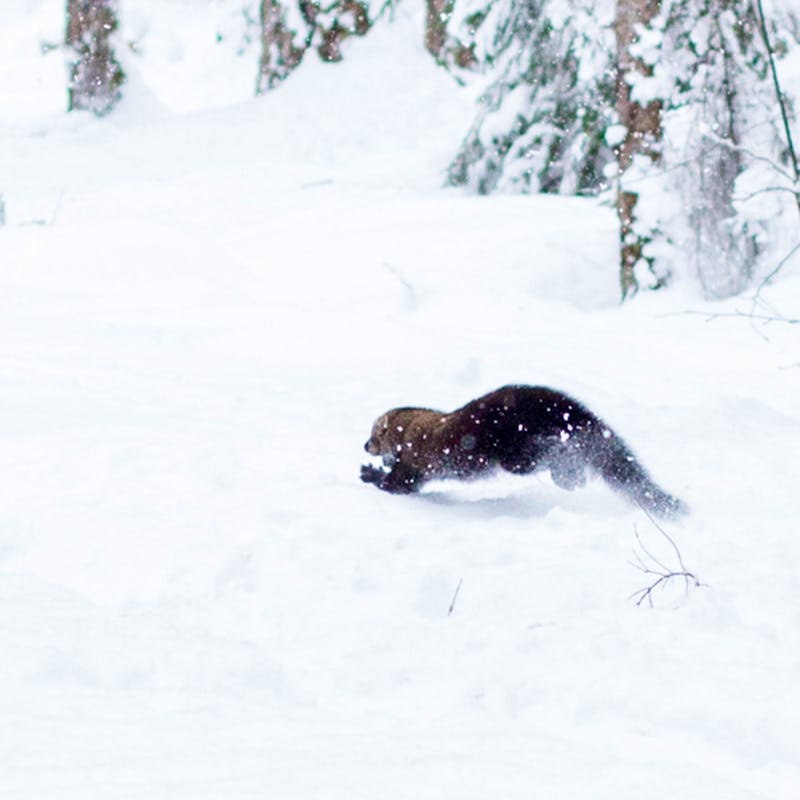It was 40 years ago – April 28th, 1976 – that Mexican gray wolves were first listed under the Endangered Species Act (ESA). The ESA may be the strongest environmental law in the world, helping to prevent the extinction of the world’s most treasured wildlife. And it works. A full 99 percent of species listed under the ESA remain with us today. But as the story of the Mexican gray wolf, or lobo, shows us, the ESA is only as strong as the will of those who uphold it. Today, despite being protected under the ESA for 40 years, the Mexican gray wolf is still the most endangered gray wolf in the world. What went wrong?
By the time that lobos were listed under the ESA, they were extinct in the wilds of the United States and extremely rare in Mexico. The U.S. and Mexico worked together to start a captive breeding program to keep the subspecies alive long enough to reintroduce wolves into the wild. Every Mexican gray wolf alive today is descended from the seven “founder” wolves in that program. This extreme measure was the last-ditch effort to stave off extinction after humans had eradicated the wolves from the landscape. But since then, humans’ efforts to right this wrong have fallen tragically short.
 The first captive bred lobos were released into the wild in 1998, but the U.S. Fish and Wildlife Service has never released enough wolves to preserve the genetic heritage of the seven founding wolves. Holding wolves back triggered a continuing loss of genetic diversity in the wild lobo population. The result of not allowing more wolves to breed in the wild is clear – the wolves are struggling. They are having smaller litters, fewer of their pups are surviving to adulthood, and the population is less able to adapt over time to changing conditions. Taken together, these threats are a recipe for extinction.
The first captive bred lobos were released into the wild in 1998, but the U.S. Fish and Wildlife Service has never released enough wolves to preserve the genetic heritage of the seven founding wolves. Holding wolves back triggered a continuing loss of genetic diversity in the wild lobo population. The result of not allowing more wolves to breed in the wild is clear – the wolves are struggling. They are having smaller litters, fewer of their pups are surviving to adulthood, and the population is less able to adapt over time to changing conditions. Taken together, these threats are a recipe for extinction.
There are about 240 Mexican gray wolves still in captivity, and they have genes that are not represented in the wild population. With only 97 wild wolves in the United States and fewer than 25 in Mexico, getting more captive wolves and their genes into the wild is critical to saving the lobo. So why have only four new lobos been released from captivity during the entire Obama administration?
Political Pressure
Recovery of the lobo is widely supported in the Southwest – the wolves enjoy polling numbers that any politician would envy. But the game and fish commissions and governors are not listening, and the U.S. Fish and Wildlife Service has been under immense political pressure from Arizona and New Mexico in particular to keep the population small. In 2010 the Arizona Game and Fish Commission asked Congress to remove all federal protections for the lobo, even though there were only 50 of them in the wild. In 2015, the Arizona commission voted unanimously to oppose all releases of adult wolves from captivity, even though scientists confirm that the subspecies cannot recover without more wolves on the ground to increase their gene pool. Similarly, New Mexico’s game commission recently tried to block all future lobo releases in the state. Arizona also lobbied the Service to keep wolves out of the habitats needed for recovery, and lobbied for a population cap of 200-300 wolves in both states. Meeting behind closed doors with state officials, the Service eventually agreed that if the population in the two states ever tops 325 wolves, the agency could begin to kill them. Now, Utah and Colorado have joined in the anti-wolf fervor – sending letters to Interior Secretary Jewell and passing resolutions opposing Mexican gray wolf recovery in their states.
Make Your Voices Heard!
This year the U.S. Fish and Wildlife Service plans to release only one pair of wolves, and will attempt to “cross foster” up to six captive pups into wild dens – an experimental technique that offers some promise but is unlikely to solve the genetic crisis. It’s too little, too late. The best way to prevent this extinction is to release more of the captive wolves into the wild, as fast as possible.
The Service has heard enough from the anti-wolf crowd – it’s time they heard from you. Tell Secretary Jewell, who oversees the U.S. Fish and Wildlife Service, that you want more Mexican gray wolves released, both this year and next. We want the Service to stop giving in to political pressure, stop making back room deals, and put a scientific recovery plan for lobos into action. Most importantly, we want more Mexican gray wolves released into the wild now, before it’s too late. It’s time for more wolves, less politics.




